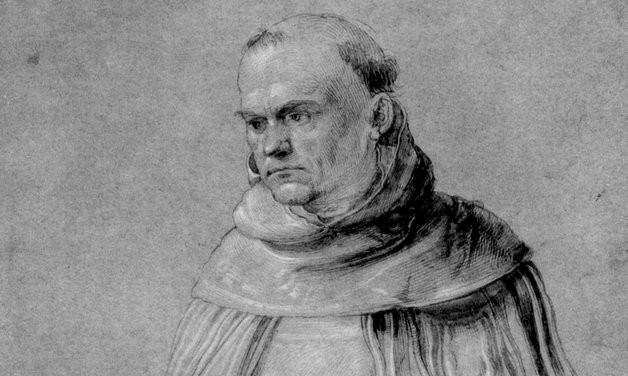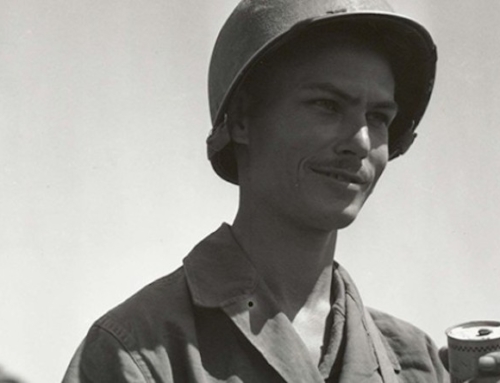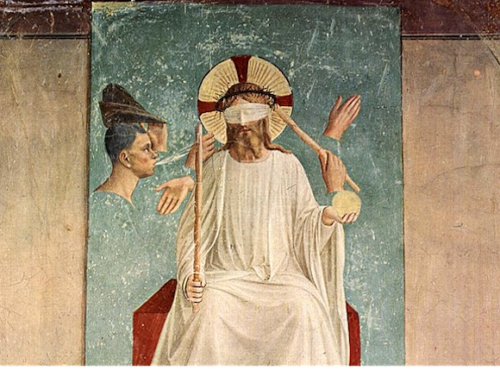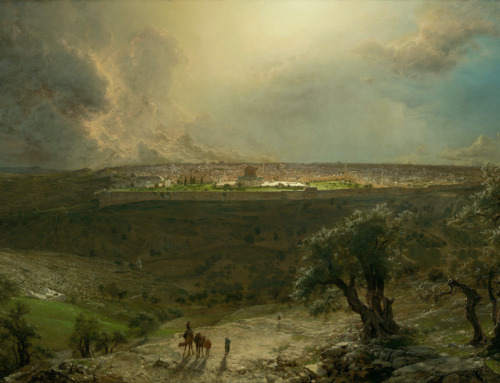For non-Catholics, Francis is the easiest saint to understand and love, while Dominic is the most difficult, once remarked Chesterton. If the abundance of Francis-emblazoned garden decorations and the world’s new-found devotion to Pope Francis—whose namesake is the beggar friar of Assisi—are a reliable indication, the statement is undoubtedly true. The endearing vagabond stigmatist of Alverna, known for his love of creation and his sympathy for the poor, easily captures the hearts of multitudes, Catholics and non-Catholics alike. In contrast, many written or artistic depictions portray Dominic as the black-and-white clad, crusade-preaching, stern-faced Spaniard of the un-holy Inquisition. Even today it seems this unfortunate caricature of Dominic abides, as many find Saint Dominic difficult to love and to others he is completely unknown.
Perhaps some would feel drawn to Saint Dominic if his great sympathy for the poor was spoken of more frequently. As the records of his canonization recall, when he was a student of theology, he sold his books to feed the poor of Palencia. But the great saint lived this solidarity with the poor his entire life, even dying in the bed of another friar—since he had no cell of his own. To witness to the authenticity of his preaching, Dominic crossed the countryside walking barefoot (in great contrast to the official papal preachers of his day, travelling as they did in luxurious caravans). A further glimpse of his absolute dedication to poverty is offered by contemporaries of Saint Dominic who attest they only ever saw him wearing the same one habit, covered in patches.
Could it not also be hard to admire Saint Dominic because of the hidden nature of his life of prayer and study? With a reputation for sincerity and dedication to his work of learning, the young saint was known to spend many long nights poring over his books. Later in life these sleepless vigils became nights given over to the work of prayer for the conversion of souls. The fruits of these kinds of efforts, though, are all-so-often veiled from our prying eyes.
Maybe affection for Dominic is foreign to some hearts because of how little is said of the intensity of his labors. Saint Dominic’s idea to found the Order was original and highly innovative. To establish the unprecedented group, the Order of Preachers, required him to be a master of efficiency and organization. Consider the fact that Dominic only worked for five years after papal approval of the Order before his death and in that time managed to bequeath to it a lasting legacy of governance, traditions, and ideals. Accordingly, these earliest days of the Order leave behind a vivid image of the extraordinary abilities and intuition of its founder.
Is it not also possible that some struggle to be devoted to Saint Dominic because they find the idea of the work of “preaching” aloof or disconnected? We have said Dominic was a man of study, a true intellectual, but Saint Dominic himself ordered these efforts towards his preaching. He was a man of learning so that he could reach people with the truth, not be distanced from them! We have only to think of the night Dominic, the preacher of grace, spent speaking until dawn with an innkeeper to convert him in order to see the saint’s acquired knowledge at work, a powerful tool put to use for the salvation of souls.
The extraordinary devotion and charity marked by provision and preparation of Dominic laud not only this man, but his master, Our Lord. Orestes Brownson says of Saint Dominic, “The fact, however, is, that there never was a man more emphatically a man of peace, and a herald of the Gospel of peace, than the blessed St. Dominic. His name is never mentioned […] except as a teacher of the ignorant, a consoler of the afflicted, and a model of sanctity for all.” When a person sees the life of Saint Dominic in its grandeur and glory, humility and simplicity, Dominic can be known as he truly is: an icon of Christ. So let us draw back the curtain, then, and allow the image of Saint Dominic to emerge from behind the shadows of our time, that by his example and intercession multitudes of men and women may be drawn to the Light of Christ!
✠
Image: Albrecht Durer, St. Dominic







